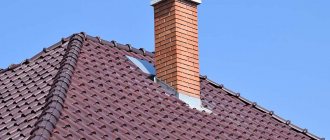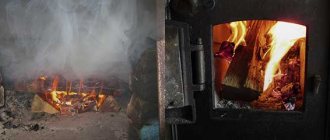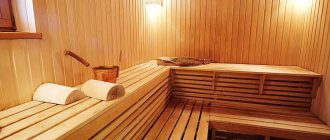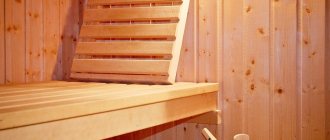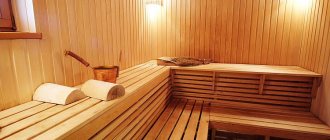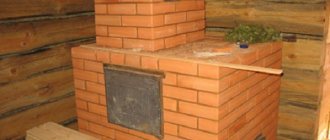One of the most popular and widely known methods of cleaning a chimney is the use of fire, or rather, the phenomenon of combustion. Not every owner of a country house in the country knows how to burn soot in a chimney safely. Of course, there is no absolutely safe and harmless cleaning method, however, radically reducing the degree of risk is an easily achievable task, the main thing is to set it for yourself.
From a practical point of view, soot is the most negative result of the constant operation of a chimney. Today, the modern progress of science has invented many different methods of cleaning a chimney, each of which has a certain set of advantages and disadvantages. However, it should always be objectively understood that the better the chimney is cleaned, the safer its subsequent continuous operation will be. (See also: How to clean soot from a chimney)
Before reaching the above situation, it is necessary to choose not only the fastest and highest quality method, but also take into account all the risks and ultimate advantages of a particular method. Of course, there are a huge number of different cleaning methods, but they are all divided into several large groups, namely:
- for chemical reagents;
- mechanical cleaning;
- physical;
- special engineering and structural devices;
- traditional methods;
- mixed group.
So, to create a flame, it is enough to set fire to several armfuls, the main thing is that they are located in close proximity to each other. The second point that you should definitely pay attention to is safety; the house needs to be well ventilated. Since there is a possibility of accumulation of various combustion end products, inhalation of which can lead to a number of negative consequences.
It is necessary to clean the chimney extremely carefully, since otherwise, there is a very significant probability of a variety of negative consequences, some of them: (See also: How to repair a stove with your own hands)
- loss of consciousness by persons who are in the house;
- unintentional house fire;
- poisoning by combustion products or cleaning chemicals;
- injury during mechanical cleaning, etc.
Of course, there is no ideal way to dispose of soot and it is unlikely that it will ever appear, however, at the moment there are many highly effective and almost completely safe methods. For example, cleaning a chimney in a bathhouse is not practically difficult. Firstly, the bathhouse is often small in size, and secondly, as a rule, the height of the chimney is also insignificant, which in turn greatly facilitates the complex process of soot disposal. In this case, you can even burn the chimney, while the risk of negative consequences is minimized, and the actual result itself will not take long to arrive.
Theoretically, the burning of soot in the chimney stops when it completely burns out. However, this axiom does not always work, since in most cases, the chimney itself, in addition to soot, contains many other flammable substances. Do not forget that the priority should not be the speed of disposal of accumulated products during operation, but safety. If there are children in the house or its surroundings, then cleaning the chimney is impossible. Because from a practical point of view, it is not easy to keep track of a child, it is very difficult, and almost impossible. One has only to think about something for a second, and the child immediately disappears from sight.
Damage to the smoke duct. Solutions.
Next to modern exhaust systems, old, proven chimney designs are smoked side by side. Let's start with common brickwork, which is suitable for wood stoves and fireplaces, but should not come into contact with smoke from burning diesel or gas. It is impossible to dispose waste from such boilers into open brickwork.
Even when fired with dry wood, a brick chimney shows signs of destruction after 2 to 5 years. Periods of freezing and thawing, rare use in combination with high humidity in the off-season allow the brick to become saturated with moisture - hence the delamination of the masonry and cracks.
When partially replacing bricks, chimney repairs are carried out only with fireclay clay (for high temperatures) and fire-resistant bricks.
Small cracks are sealed with heat-resistant sealant. To save the channel from further destruction, the following methods are used:
Method No. 1 - Gilding:
A metal pipe is placed in the chimney. In this case, the work must be carried out carefully - if the chimney is long and the joint is bent, then soot plugs will constantly form in this place. The pipe is connected with a sealant designed for temperatures from 1000 degrees. In such a “sleeve” made of heat-resistant stainless steel it is already possible to remove gases from the heating boiler.
Disadvantages of lining:
- suitable for direct channel only;
- the cross-section of the chimney is reduced;
- the pipe runs the same diameter throughout the chimney.
Method No. 2 - Internal lining
Heat-resistant mixtures restore and smooth the inner surface of the canal. Resistant to temperatures above 900 degrees, they increase the service life of the entire chimney. You can carry out the work yourself using Massan or Mordax compounds and special brushes.
Disadvantages of lining:
- only for brickwork;
- must be repeated every 3 years;
- only for straight vertical channel.
Method No. 3 - Polymer materials
Economical condensing and pyrolysis boilers produce smoke supplied with acids and temperatures up to 200 degrees. Cold acidic smoke is the main cause of condensation in the duct, which destroys not only the masonry, but after a few years also stainless steel (with characteristic leaks at the seams).
A modern method of chimney protection is FuranFlex materials. The polymer, in the form of a solid soft pipe 2-3 mm thick, fills the channel with slopes of 30 to 45 degrees and hardens. Protection is installed by specialists. The warranty on the material is 30 years, service life is unlimited.
Disadvantages of using polymer materials:
- not suitable for flue gases with temperatures exceeding 250 degrees (during prolonged combustion);
- the rectangular chimney is not completely filled (the cross-section decreases accordingly).
If metal pipes (or sandwich systems) are damaged, it is enough to replace 2-3 sections, again fastening the entire structure with heat-resistant sealant.
Ceramic chimneys rarely require repairs. An extreme case is cracks at the joints of sections due to improper installation or a sagging foundation (for chimneys heavier than 750 kg). To prevent this from happening, the chimney is attached to the ceiling and roof loosely and strictly vertically. Depending on the damage, the crack is sealed with a suitable sealant, or the entire section is replaced. You can cut the ceramic casing with a grinder, then plant the new section on a special acid-resistant solution.
Previously, ceramic water pipes and asbestos-cement pipes could be used for the chimney. Both options cannot withstand high temperatures and temperature changes, quickly deteriorate and crack. This threatens an unexpected fire. Open sand-lime brick is also unsuitable for smoke.
The durability of the chimney itself depends not only on the properties of the material, but also on proper selection regarding the power and waste of the boiler, as well as proper operation and timely maintenance. There is no need to skimp on fire safety.
What to do if smoke from the stove comes into the house?
Strong wind It happens that with strong gusts of wind, smoke is thrown into the room. The cause can be easily eliminated - you need to raise the head of the chimney higher, or change the cap on the chimney.
Interesting materials:
How to choose the right tie? How to choose the right pot? How to choose the right grill? How to choose the right caviar in a jar? How to choose the right quality toothpaste? How to choose the right quality dark chocolate? How to choose the right inner tube for a bicycle? How to choose the right card reader? How to choose the right refrigerator? How to choose good chocolate?
Accumulation of soot inside the channel. Chimney burnout:
Combustion products settle on the walls of the chimney duct, especially on rough surfaces, protrusions, turns and corners, where soot and tar can form plugs. On smooth surfaces, soot is retained by condensation. A painful issue for long-burning boilers. By switching to smoldering mode, they lower the temperature of the exiting smoke. Which, cooling even more in the chimney, settles on the walls with soot and moisture.
You can notice a clogged pipe by the color of the gases: light smoke is normal, dark smoke is a blockage. As a result, the channel narrows, the draft decreases, it becomes more and more difficult for the unit to work and the threat of fire is imminent. Accumulated soot easily catches fire and can damage not only the pipe, but the entire building.
How to clean a chimney from soot?
It is rational to use two cleaning methods - mechanical and chemical. Moreover, the second one is more likely for preventive purposes.
The chemical agent for soot, in the form of a briquette, liquid or powder, is burned in the firebox together with firewood or separately. Gas compounds enter the chimney and corrode the soot. The preparations are produced for different thicknesses of soot, and have an amplitude of action from hours to several weeks. During this time, the soot falls down and is cleaned out mechanically.
Disadvantages of chemical cleaners:
- work with small accumulations (up to 1 cm);
- corrode the surface of the chimney.
Mechanical cleaning of the channel is the most effective way to remove soot, especially its resinous compounds. The lower part of the chimney (stoves, fireplaces) is cleaned from below with special brushes, the upper part is cleaned by lowering a brush and a load from the roof into the chimney.
Metal chimneys can only be cleaned with a nylon brush. The steel nozzle will scratch the surface, which means that even more soot will settle, the metal will rust, and the pipe will quickly need to be replaced.
By periodically throwing dry aspen into the firebox, you can clean the chimney of small deposits. Aspen firewood produces a high temperature at which the soot burns out. The main thing is not to burn the chimney itself. If a lot of deposits have accumulated, then the soot will burn at a temperature above 1300 degrees, which can only be withstood by a ceramic chimney (in the lining), if it is marked with fire resistance. And for sandwich systems and stainless steel pipes this is death.
In order for less soot to settle in the chimney, you must:
- burn with dry hardwood firewood (pine and spruce emit resins, and raw firewood smokes heavily and adds moisture);
- make the inner surface of the chimney smooth and sealed;
- reduce condensation formation.
Prohibited! Burn materials containing glue or plastic (for example, furniture scraps) in the firebox.
It would be a good idea to evaluate the quality of the pipes before purchasing, as well as the assembly process itself. Parts of sandwich systems must have a clear configuration (and practice shows that this is not always the case) and tight connections during assembly. Any difference in the internal joint will collect soot on the joint, and an unsealed installation will leave an opening for condensation. In composite versions (metal - filler - metal), the insulation must fill the entire space. This applies to both cotton wool materials and vermiculite. Good insulation prevents the pipe from cooling quickly, keeping the smoke “hot”. Higher temperature means less moisture means less soot deposits.
Furnace structure
Ash pit.
It collects ash and ash - the remains of burnt fuel.
The ash pan is usually closed, which has its own tasks: to remove ash from the chamber and regulate air flows during combustion. Firebox.
Its place is above the ash pit, fuel burns out in it, “charging” the air with heat, after which it leaves through the chimney channels, warming up the walls of the stove and the heater.
In order for fuel waste to fall into the ash pan, the bottom of the firebox occupies
Heater - the location of the container with stones - the concentration of all the heat and steam from the sauna stove. The entire “weather in the bathhouse” depends on the correct shape the bathhouse owner chooses for the heater, and what size it will be.
The heater can be open or closed; this determines what mode of operation of the firebox will be - constant or periodic.
The last structural elements are the chimney pipe and chimney shaft
. Through them, warm air, heated in the stove, goes outside, beyond the walls of the bathhouse.
Formation of condensation in the chimney
Moisture in the chimney impairs draft; this is easy to notice with constant use. Sticky soot blocks the pipe. In the masonry of brick chimneys, smudges appear at the seams, the bricks are saturated and destroyed.
At the bottom of the channel the temperature of the exhaust gases is maximum. Moving upward, the flow cools, lingering at the bends, and settles in drops on the cold surface of the chimney. Metal pipes that are not insulated cool down in a few minutes (when switching to a smoldering combustion mode), brick and ceramics give off heat more slowly. Hence the ability of the metal to collect drops of moisture on itself.
Insulating the pipe helps keep the temperature of the exhaust gases above the “dew point”. With a “lined” chimney, the space between the masonry and the pipe is filled or filled with non-flammable insulation (expanded clay, stone or glass wool). The top and bottom of the gap are sealed with a plug.
If the diameter allows, it is reasonable to assemble an analogue of the sandwich system. Having insulated the outside of the existing metal pipe with a layer of 5-10 cm of mineral wool, it is necessary to protect the entire structure on top with metal sheets or a pipe of a suitable diameter. On the outside, the channel experiences less stress, so a more aesthetic material can be chosen.
Correct installation of the chimney is important. The joints of the insulation and pipes should be staggered. The metal is connected with heat-resistant sealant and fasteners, and the entire structure is tightly fixed with clamps. If the joints in a homemade or purchased sandwich system are not sealed, condensation will seep in and destroy the insulation. In response, the temperature and fire danger will increase. The chimney will more often than not be damp and clogged.
Conditions under which excess condensation forms:
- burning with raw wood;
- cold chimney (not insulated or not used for a long time);
- weak combustion of fuel (with a lack of air, too weak draft or too strong), for example, in boilers in smoldering mode.
In a poorly calculated chimney design, the escaping gases also cool quickly. Channels with high heights, complex bends or narrowing diameters slow down and cool the smoke. If the cross-section is larger than optimal, then the draft weakens and condensation also forms.
Wood-burning stoves with 5-7 channels are difficult to warm up with a small load. The smoke will go into the chimney cold. To warm the smoke and reduce the amount of moisture, the design makes a thin direct connection between the firebox and the upper last channel. Also, previously, firewood was sprinkled with rock salt before the firebox - it removed some of the condensation. An ancient method of prevention.
Why does it smoke?
Smoke in a bathhouse is not only unpleasant. It is also very dangerous. Any schoolchild knows: during the combustion process, carbon monoxide is formed - a strong poisonous substance. So you need to carefully ensure that only steam and heat, and not smoke, remain in the room where you like to have a good time.
So, for what reason does the stove smoke in the bathhouse and what to do about it?
- The simplest reason (this can occur if you did not design and install the bathhouse and stove equipment) is that the stove “does not work” due to the internal diameter of the smoke exhaust pipe being too small. If this figure is less than 120 mm. - change the pipe.
- This reason is more difficult to eliminate (and most likely, you will not be able to master the process on your own), but you will still have to do something: if a metal sauna stove starts smoking during the first fire, there is a high probability that you installed the unit incorrectly or made errors in the design
- However, do not rush to panic! Perhaps the problem is not in the design of the furnace, but in the pipe, and then it will be relatively simple to correct the situation.
Causes of insufficient and reverse draft in the chimney
A smoky room, difficult ignition and slow combustion are the main consequences of poor draft in the chimney.
The reverse draft can “knock” fire out of the firebox into the room or, in the minimum version, extinguish the boiler burner. With poor air flow, soot is retained in the pipe and condensation accumulates more. Traction disorders have four main causes:
Reason No. 1 - Incorrect chimney design
- low height relative to the roof (less than 0.5 meters or 1 meter above a flat form);
- the channel cross-section does not correspond to the characteristics of the boiler or furnace;
- the chimney consists of sections of different diameters;
- incorrect turns, slopes and angles of the channel (the norm is a bend of 45, a turn of 90 degrees);
- horizontal pipe sections longer than 1 meter.
For a chimney, it is better to focus on a cylindrical cross-section - in rectangular-shaped channels, vortices are formed at the corners. Soot settles there first, limiting traction.
Important! You cannot independently combine several exhaust chimneys into one network. Only professional calculations will help you do this. This is the case when savings at the beginning are reflected in wasted time and nerves in the end.
Reason No. 2 - Insufficient tightness
When the damper in the chimney (usually in stoves and fireplaces) does not close tightly, warm air from the room enters the chimney. Uninsulated metal chimneys are especially susceptible to cold. As a result, at sub-zero temperatures the channel can be completely blocked by frost. Changing the valve to a denser damper and insulating the chimney itself helps.
Unsealed joints in a metal pipe disrupt the flow of air during the fire and often extinguish the flame of a gas burner. Each joint seam must be tightly treated with a heat-resistant sealing compound.
Reason #3 - Ventilation
For good traction, uniform access of oxygen is necessary - properly functioning ventilation. Its violation or absence guarantees questions. Too strong drafts interrupt the draft and return it to the house. Lack of oxygen affects combustion. Thus, gas boilers often draw air back from the chimney, compensating for the lack of air with reverse draft. This is why the burner goes out.
By opening the access of fresh air to the room, you can properly organize the flow from bottom to top.
Reason #4 - External factors
The draft often worsens under the pressure of cold street air (when the stove has not been heated for a long time and the cold has accumulated in the chimney). With strong air currents or pressure differences - when the house is colder than outside. The weather is changing, and to restore draft, you can warm up the chimney in front of the main firebox, burning paper (preferably closer to the duct). The draft is also severely limited by fallen bricks, debris in the chimney, in the form of bird's nests, or banal soot.
How can you improve chimney draft:
- resolve issues regarding chimney design;
- insulate the outlet channel;
- organize a constant flow of air;
- Clean the chimney from soot in a timely manner.
Regular inspection of the chimney for leaks and damage helps resolve many issues already at the start.
Where to start checking your furnace
Smoke comes out of the house, and you need to start checking from the roof - from the chimney.
If the draft was good, but suddenly stopped, the cause may be an object that blocked the pipe. This happens especially often if there is no cap over the chimney and there are tall trees nearby. Any object can mechanically narrow the chimney channel: a nest made by birds, a brick falling out of the chimney, an accumulation of branches, debris. If there is no cap, the draft also disappears during strong winds. The air mass creates a turbulence in the pipe and blocks the path of smoke. It comes back and exits through the latches and doors. In calm weather there is no smoke in the house, and from this sign you can already understand its cause.
Design mistakes or what you shouldn’t save on
When designing a house, engineering comes first, only then beauty. Once you make an indulgence, you can then pay double the price for the chimney, or lose the entire house.
Even a hollow decorative brick for the top of the chimney can be a surprise. It strongly absorbs moisture and quickly deteriorates, even if the sleeve is made of metal inside. Leaks pass down the main masonry and destroy the chimney. By replacing decorative brick with solid brick, you can protect the main masonry from destruction.
The passage of the chimney pipe through the floor ceiling, attic space, and roof must be secured according to all standards, or better yet, with a reserve. The fillers in a sandwich pipe shrink over time (sometimes 3-4 years of intensive work) and can crumble, causing the outer metal to heat up above normal.
The cutting on the roof and in the ceiling must be designed for this. Of course, quality is the responsibility of the manufacturer, but your own safety is a personal matter. “Hollow” stainless steel will last for years, but only with careful monitoring.
Umbrellas and caps over the chimney prevent precipitation from entering the chimney, but delay the draft and collect condensate. Perhaps, from different heights and shapes of umbrellas you can find protection for the pipe, but this is rather an individual selection to the features of the heating system.
Careful periodic inspection and competent operation help to reveal many issues, 99% of which can be completely resolved by one’s own efforts.
Smoking from the stove due to incorrect chimney height
Often the outside of the pipe is built of insufficient height. There is a rule according to which it must exceed the height of the roof ridge by an amount depending on the distance to it:
- by 0.5 m at a distance from the ridge of up to 1.5 m;
- not lower than the level of the ridge, if the distance from it is 1.5-3 m;
- not less than an angle of 10° from the ridge level at a distance of more than 3 m.
If these conditions are not met, the stove will smoke due to insufficient draft and wind currents from the street. This error can only be corrected by extending the chimney. In case of severe wear, a major overhaul is carried out. It involves restoring the masonry and lining it with a metal pipe.
